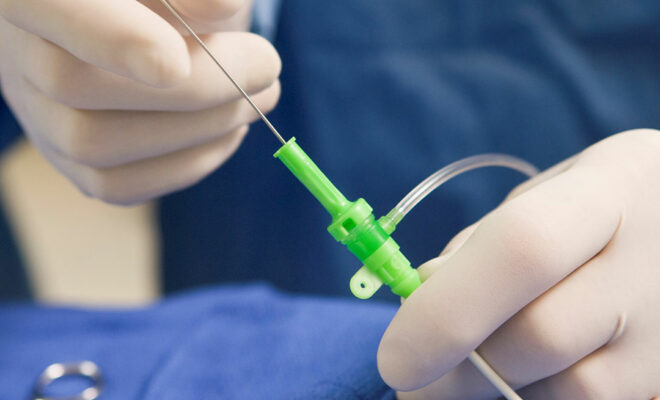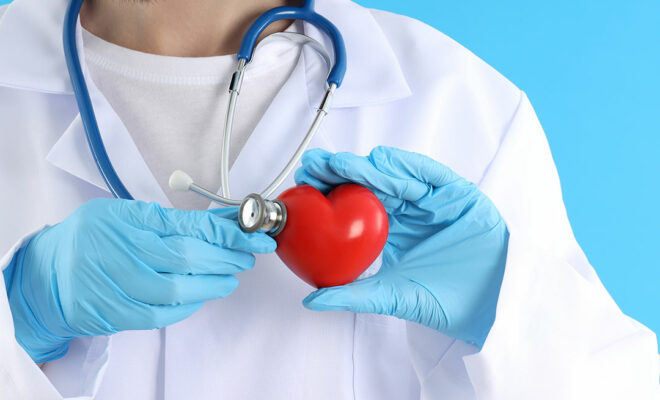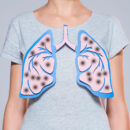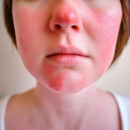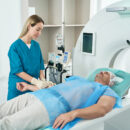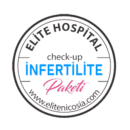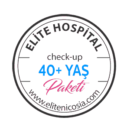What is a Heart Attack? What are the Treatment Methods?

Heart attack, known medically as "myocardial infarction", is one of the feared diseases among the public. Many people say “What is a heart attack?While searching for an answer to the question, many “What causes a heart attack?” wonders the question. A heart attack is a condition in which the coronary vessels feeding the heart become blocked, resulting in damage to the muscle tissue of the heart. Interrupted blood flow causes serious damage to the heart. Therefore, it is necessary to open the vessels and prevent heart tissue loss with correct and timely intervention. (Time = muscle damage)
What are the symptoms of a heart attack?
Chest Pain
Most heart attacks cause pain felt in the middle of the ribcage. Heart pain called angina usually lasts a few minutes and may be temporary. It can be felt as pressure, squeezing, heaviness and pain. It may also occur in a way that can be confused with complaints of stomach discomfort such as indigestion and burning in the chest. However, chest pain that continues for more than half an hour is a sure sign of a heart attack.
Pain in the Upper Body
A heart attack may also occur with pain in one or both arms, back, shoulders, neck, lower jaw and upper stomach.
Shortness of breath
Shortness of breath may be the only symptom of a heart attack, or it may occur before or after the pain. It may develop at rest or with minimal movements.
Other Symptoms of Heart Attack
- Sudden cold sweat,
- Sudden attacks of fatigue for no reason (especially in women),
- Nausea and vomiting,
- sudden dizziness,
- Increasing or prolonging the duration of existing complaints.
Contrary to popular belief, heart attacks do not always occur as sudden and severe chest pain. Some people can have a silent heart attack without feeling any obvious complaints (especially diabetics).
Symptoms of heart attack Knowing this allows an individual who encounters such a situation to access medical care without wasting time. Because early intervention is very important in heart attack. Early intervention can both reduce the risk of life and ensure that the heart muscle is saved from damage.
How does a heart attack occur?
The main cause of heart attack is the clot that develops due to the rupture of plaques formed due to cholesterol accumulated on the vessel wall. As a result of this situation, the vessel becomes blocked and the blood needs of the heart muscle cannot be met. Heart muscle cells begin to die and heart muscle function is lost in the blocked area. It means the number of heart muscle cells that are lost every second. Therefore, early intervention in a heart attack is vital.
Heart Attack Risk Factors
Treatment of heart attack It is most effective in the first hours after the event begins. For this reason, when we suspect a heart attack, you should consult a healthcare provider as soon as possible. It is possible to overcome the crisis without any damage with rapid diagnosis and treatment. From this point heart attack symptoms It is important to recognize.
heart attack risk There are two important risk factors that increase: The first of these is “irreversible risks” It is called . Genetic factors, age, being male fall into this first group. Men and those with a family history of heart attacks at an early age are at a greater risk for heart attack. Their risks increase with age.
As for the second risk factors: “modifiable risks” is called. Reducing these risk factors depends on the individual's efforts.
Changeable Risks in Heart Attack
- smoking,
- High blood pressure (hypertension),
- diabetes disease,
- High blood fats
- High body weight i.e. obesity.
However, someone who has all of these risk factors carries the highest risk of heart attack. For these reasons, it is very important to learn about the risk of having a heart attack in advance.
The risk of heart attack is higher in some individuals in society. For this reason, risk analysis of all individuals, identification of those at high risk and implementation of risk-reducing measures can be life-saving.
What should be done in case of heart attack?
The question of what to do in the event of a heart attack is an important issue for many people, both for themselves and their loved ones during the crisis. Chest pain, which is the first and strongest sign of a heart attack, begins as pressure and burning and then spreads to the neck and arm. Cold sweating begins on the back and forehead. Sometimes it can be seen as a heart attack accompanied by severe symptoms, and sometimes as a mild discomfort. During this time, the pain increases with movement, and although it decreases with rest, it does not go away completely. It can last more than half an hour and may be accompanied by cold sweats and nausea. Therefore, mild or severe chest pain should always be taken into consideration.
In the event of a heart attack, minutes are raced. It is necessary to reach a health unit as soon as possible. A person who has a heart attack should never go to the hospital on his own, and should avoid doing movements that require more oxygen, such as climbing stairs. The first precautions you can take for both yourself and the people around you who are having a heart attack may be:
- When one of the symptoms of a heart attack begins, the first thing to do is to call for professional help. So 112 should be called immediately.
- If you are alone and your phone is close to you, call the ambulance and inform your relatives.
- Loosen/open the collars of your clothes, such as ties or shirts.
- Since a heart attack is a condition that requires first aid, ask for help if you have an experienced person with you. If the person has not received first aid training, do not allow him/her to treat you and ask him/her to call the ambulance. No matter how close you are to the person having a heart attack, if you do not have first aid training, you should not intervene.
- If possible, open windows and doors to ensure that the environment is filled with plenty of oxygen.
- If you have a heart attack while driving, pull over immediately and seek help.
Heart Attack Diagnosis Methods
Heart attack diagnosis It can be placed by a physician. The two most important information for this diagnosis are the patient's complaints and ECGIt is provided by evaluating the . If ECG (electrocardiography) findings are typically compatible with a heart attack and the patient's complaints are also compatible with a heart attack, a diagnosis is made and treatment is started immediately.
In some cases, ECG findings may not be obvious. In this case, some enzymes that rise in the blood as a result of damage to the heart muscle are measured. This blood tests Although it is helpful in diagnosis, it has the disadvantage that it increases only after a certain period of time. Therefore experts echocardiography or may request angiography examinations.
Heart Attack Treatment Methods
Early diagnosis and treatment of heart attack reduces the damage to the heart. Before a definitive diagnosis of heart attack is made, various treatments are applied even in case of suspicion. These applications are as follows:
Drugs That Prevent Blood Clotting
Nitroglycerin to reduce chest pain and improve blood flow
Oxygen Therapy
Once the diagnosis of heart attack is confirmed, doctors will quickly begin treatment to remove the blockage in the heart vessels. There are two treatment methods that can be applied for this purpose;
Clot Dissolving Drugs (Thrombolytic Therapy)
The second is percutaneous coronary intervention (coronary angiography and angioplasty).
thrombolytic therapy
It is a method of administering clot-dissolving drugs intravenously to dissolve the clot formed in the vein. This drug treatment is effective within the first 6 hours after a heart attack and should be administered as soon as the diagnosis is made. Since the drugs have serious bleeding side effects, they are preferred in a limited group of patients living in regions without coronary angiography facilities.
Percutaneous Coronary Interventions
It is a non-surgical method to open blocked or narrowed veins. It is a method in which clogged veins are opened by advancing a thin, plastic tube (catheter) with a balloon at the end through the arm or groin vein, and when it reaches the stenosis level, the balloon is inflated and the plaque and clot in the vein are adhered to the vein wall.
At the end of this intervention, blood flow in the blood vessel is ensured. During the procedure, cage-like structures called "stent" are placed, which ensure that the stenosis remains open for years.
Other treatments for heart attack are medications and establishing a healthy lifestyle. Medications: After a heart attack, your doctor may want you to use one or more of the following medications continuously.
ACE Inhibitors
ACE inhibitors are drugs that lower blood pressure and reduce pressure on the heart muscle. It also has additional benefits, such as preventing the heart muscle from weakening after a crisis.
Blood Thinning Drugs
These are drugs that prevent coagulation cells from coming together and forming unwanted clots. In addition, they should be used for at least 1 year after the stent, as they prevent the inside of the stent from becoming clogged with clots.
Beta Blockers
Beta blocker drugs reduce your heart's workload. Additionally, it is used to prevent chest pain and prevent a new heart attack. It is also used in the treatment of rhythm disorders.
Cholesterol Lowering Drugs (Statins)
Statins lower or control your blood cholesterol. You can prevent a new heart attack or stroke by lowering your blood cholesterol level.
You may also be given additional arrhythmia medications to control your heart rhythm, antidepressants or diuretics to reduce your anxiety level. You should use your medications as recommended by your doctor and should not stop treatment unless your doctor tells you to.
Other Treatments
Coronary artery bypass graft surgery can also be performed to treat a heart attack. During coronary bypass, the aim is to open your blocked artery and bring blood to the blocked area through your doctor.
Lifestyle change:
An issue as important as medications and stent procedures is that people who have a heart attack adopt a healthy lifestyle. For this purpose, quitting smoking, regular exercise, healthy nutrition, maintaining ideal weight and stress management are recommended. These lifestyle changes are vital in preventing heart attacks from recurring.
Emergency Treatment is of Vital Importance
Once a heart attack is diagnosed, immediate treatment must be started. This treatment has two purposes; To prevent loss of life due to heart attack and to prevent damage to the heart muscle.
The biggest cause of death due to heart attack is fatal heart rhythm disorders. These are more common in the first hours of a heart attack. For this reason, the patient diagnosed with a heart attack is admitted to the coronary intensive care unit. Here, heart functions are constantly monitored by machines and any possible irregularities can be intervened immediately.
Another important goal in heart attack treatment is to prevent damage to the heart muscle by opening the blocked artery. If vasodilator treatment can be applied within the first hour of a heart attack, damage to the heart muscle can be prevented to a large extent. For this reason, the first 60 minutes of treatment are called the "golden hour".
If the vessel remains blocked for a longer period of time, the heart muscle is irreversibly damaged, and even if the patient survives the heart attack, heart failure may develop in the long term. This is a very negative factor for long-term survival and quality of life.
Post-Hospital Care is Very Important
Care and treatment after a heart attack are very important. A second crisis always carries much greater risk. Therefore, a detailed risk assessment is carried out before the patient is discharged. All factors that lead to heart attacks are being reviewed and attempts are being made to eliminate them.
This care should include lifestyle changes, rehabilitation, dietary counseling and drug treatments. At this stage, the patient should not lose close contact with his physician, should not disrupt the education process, and should be a part of his treatment.
If the factors that cause a heart attack are not adequately combated, the risk of a heart attack recurring is high. It is of great importance to quit smoking, do regular and controlled exercises, reach the ideal weight with an appropriate diet, and treat high blood pressure, diabetes and high blood lipids.
In addition, compliance with and non-compliance with the prescribed drug treatments positively affects long-term survival and quality of life.
Exp. Dr. Halit Ozbek
Cardiology and Internal Medicine Specialist
Contact Us For Appointment:
Telephone line: 0392 444 3548 (ELIT)
Contact Form: https://www.elitenicosia.com/iletisim/

